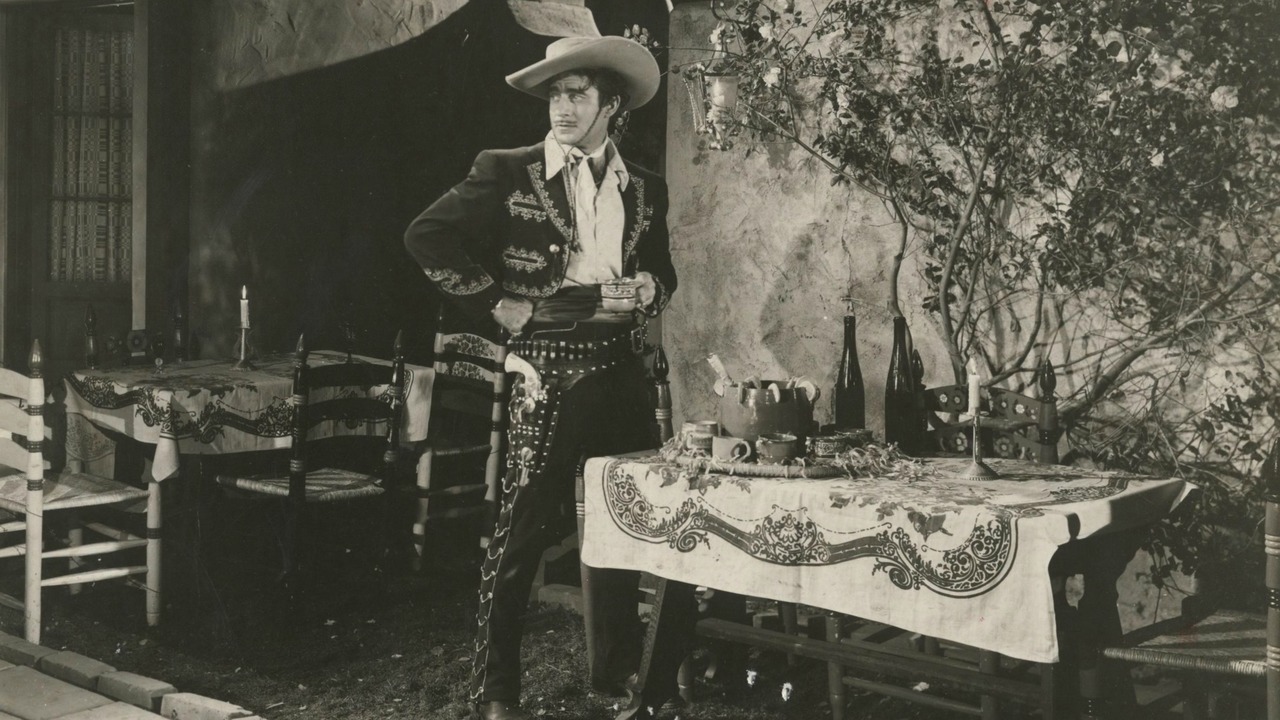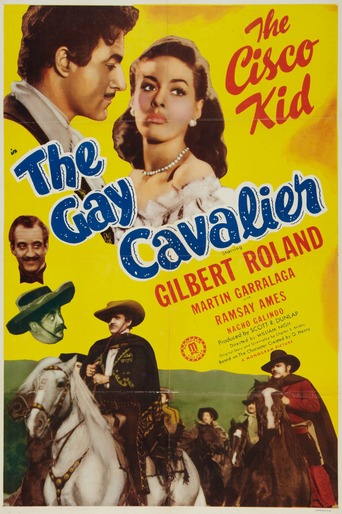



Fantastic!
This movie was so-so. It had it's moments, but wasn't the greatest.
View MoreIt isn't all that great, actually. Really cheesy and very predicable of how certain scenes are gonna turn play out. However, I guess that's the charm of it all, because I would consider this one of my guilty pleasures.
View MoreOne of the film's great tricks is that, for a time, you think it will go down a rabbit hole of unrealistic glorification.
View MoreMonogram Studios is one of the co-called "poverty row studios"--one of several very low budget studios of the 1930s and 40s. Often, to save money, these studios leased studio space from the larger studios at night and the films were generally B-films. Probably the biggest studio on poverty row was Monogram--the people whose hottest property in the 40s were the Charlie Chan films.Starting in 1946, Monogram branched out to make the Cisco Kid series and this is the first of seven. I had high hopes, as I'd previously enjoyed the Cisco films starring both Warner Baxter and Cesar Romero. Unfortunately, there were some MAJOR problems with the film at the outset that surprised me. First, as each character entered the beginning of the movie, they all had very lengthy expositions--a very sloppy example of writing. It sounded really stupid hearing them not exactly talk to the other characters but instead give a lengthy monologue where they tell the back story! For example, in the opening scene with the father and his two daughters, instead of just talking to them, the dad explains that they are both sisters, which is the youngest sister AND that the one girl is about to be married because the family is poor!! Now all three of the characters should have known this and this long exposition was only there because the writers didn't bother to use dialog effectively to explain the background. Sloppy and silly--this happened two more times in the first 10 minutes with other characters!! Second, the plot must have been re-tooled or changed and repeatedly throughout the film, some hack inserted the words "Cisco Kid" into the dialog! It's clearly NOT the characters talking and how they expected people to not notice is beyond me. It was as if they just didn't care. Even for a Monogram film this is all very, very sloppy.As to the plot, a shipment of money to build a new mission is stolen by bandits. They murder almost all of the guards protecting the money and deliberately let a man live AFTER they talk as if the gang attacking them is the Cisco Kid and his pals! Considering that the Cisco Kid is sort of like the Robin Hood of the Old West, such a dirty deed is obviously beyond the Kid. But, naturally, the citizens of Old California naturally believe the false story and it's up to the Cisco Kid to find out who the real killers are and clear his name.The Cisco Kid, after some investigating, learns that the nice rich man (Lawton) who is going to marry the daughter of a poor but respected Mexican gentleman is actually the man who is behind the robbery/murders. He also naturally falls for one of the old Mexican gentleman's daughters. So, how does the Kid both prove Lawton is evil AND still help the Mexican Caballero save his estate? And, is this pretty lady the one who will finally lasso the Cisco Kid? Tune in to find out.As far as the acting goes, Gilbert Roland was Mexican by birth, so he was able to pull off the part reasonably well. The rest of the acting was about what you'd expect from a Monogram production--nothing special and at times pretty poor. Overall, watchable but that's about all and this film doesn't have anything to it to make it stand out from all the other Cowboy films Monogram made during the era. In fact, the structure of the film is essentially a Gene Autry film with a few name changes.
View More"The Gay Cavalier" was the first of six Monogram outings released in 1946-47 starring Gilbert Roland as that "Robin Hood of the Old West", O. Henry's "The Cisco Kid". The part was made to order for Roland who had been around in films since the 20s. He made a career out of playing Mexican banditos, caballeros and fathers of senoritas as well as the occasional hero. This was a rare opportunity for him to have the leading role. There is no "Pancho" here but a Pancho like character called "Baby" that would appear in the first four films in the series.The story centers around the hacienda of one Don Felipe Geraldo (Martin Garralaga - who played "Pancho" in other Cisco films). Don Felipe is about to go broke and lose his rancho. His younger daughter Angela (Helen Gerald) has agreed to marry rich Americano Lawton (Tristram Coffin) to save her father's property.Unknown to the Geraldos, Lawton and his partner Lewis (John Merton) have other ideas. They hold up a caravan carrying money to build the local mission and brutally murder most of the riders and lay the blame on Cisco and his riders.Cisco and Baby (Nacho Galindo) learn from a dying member of the caravan that the robbers have taken a wounded man to Don Felipe's home. They infiltrate Don Felipe's fiesta to learn who has blamed them for the robbery. Cisco discovers Don Felipe's older daughter, the comely Pepita (Ramsay Ames) and she becomes attracted to him.Cisco learns of the whereabouts of the stolen loot, confronts Lawton's gang and ..................................Roland plays Cisco much like Warner Baxter did in "In Old Arizona" (1929) as a roguish womanizing, tequila drinking caballero. He robs from the rich and in a peasant village is seen giving to the poor. He doesn't give all to the poor as evidenced by his silver saddle and silver trimmed costume and gun belt. The fetching Ms. Ames while making an appealing heroine, is also credited with writing two songs performed in the movie. Cisco's riders by the way ride along singing in perfect harmony.The most surprising element of this film is the level of violence, unusual for a series western. During the holdup sequence, a wounded man is shot and killed to make sure he is dead. Also, Baby knifes a baddie during the scuffle in the bandits hideout. In the same scene, Cisco calmly shoots down a bad guy when he appear to be gaining the upper hand on Juan (Drew Allen) while not participating in the fisticuffs himself.In another unusual scene for a "B", Roland and Coffin stage a sword fight in which both actors are clearly seen performing the feat.This series is nothing like the sanitized characters of Cisco and Pancho played by Duncan Renaldo and Leo Carillo which followed this series.
View More